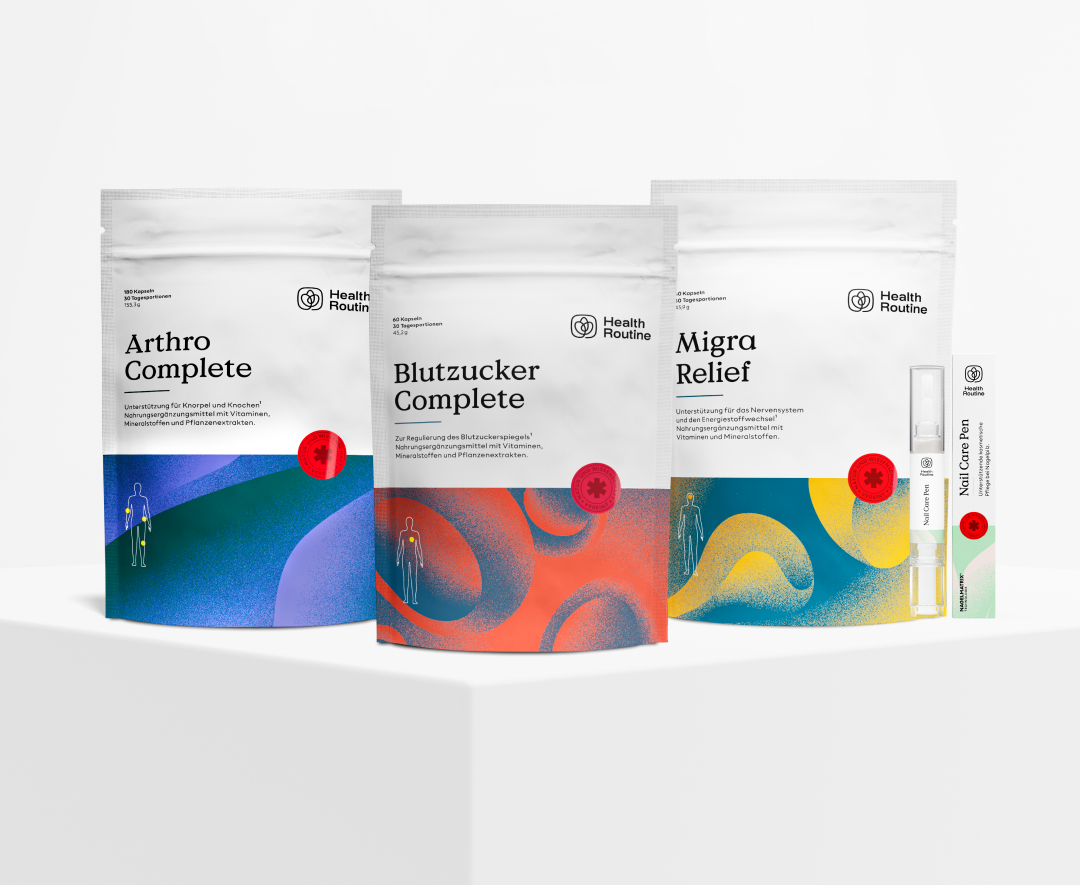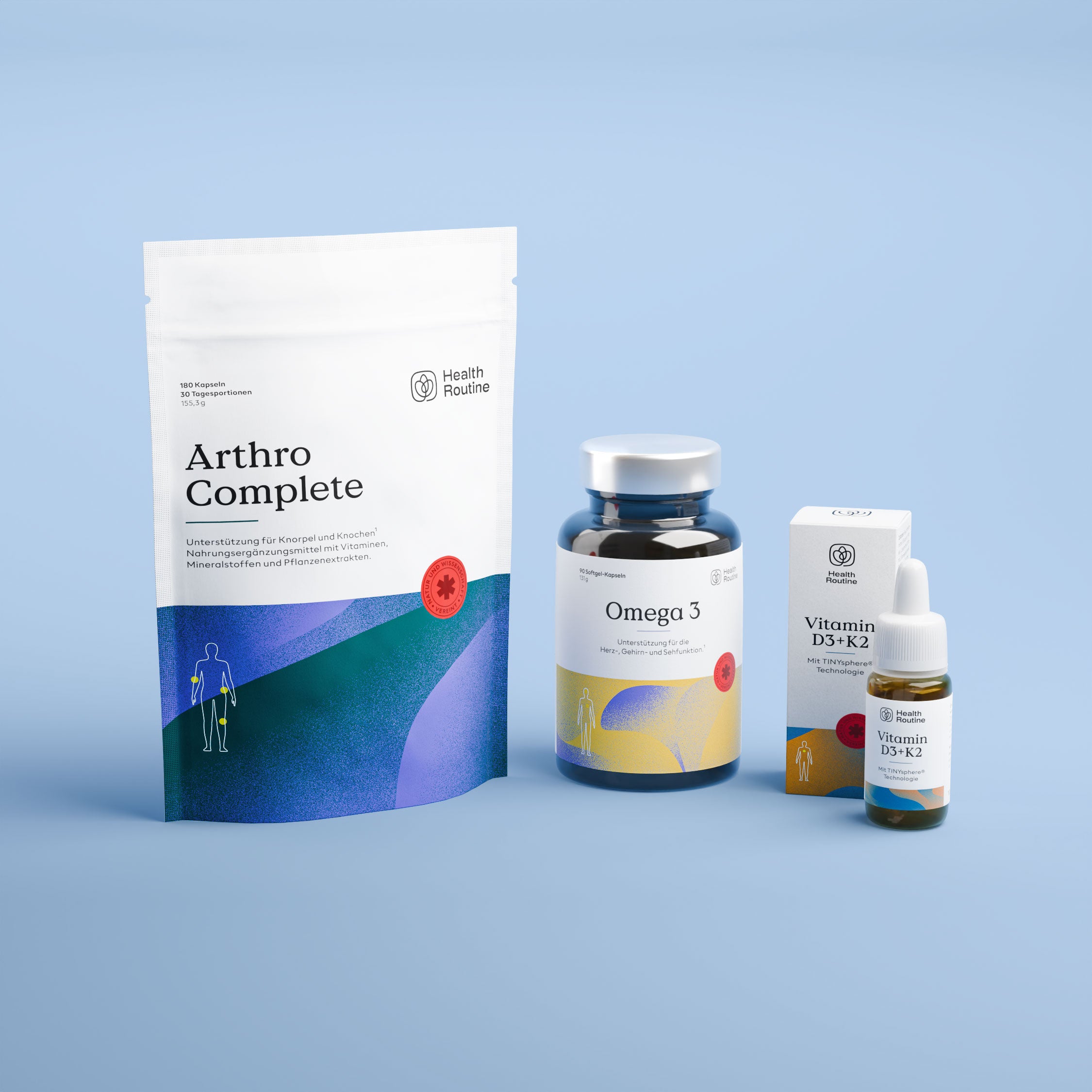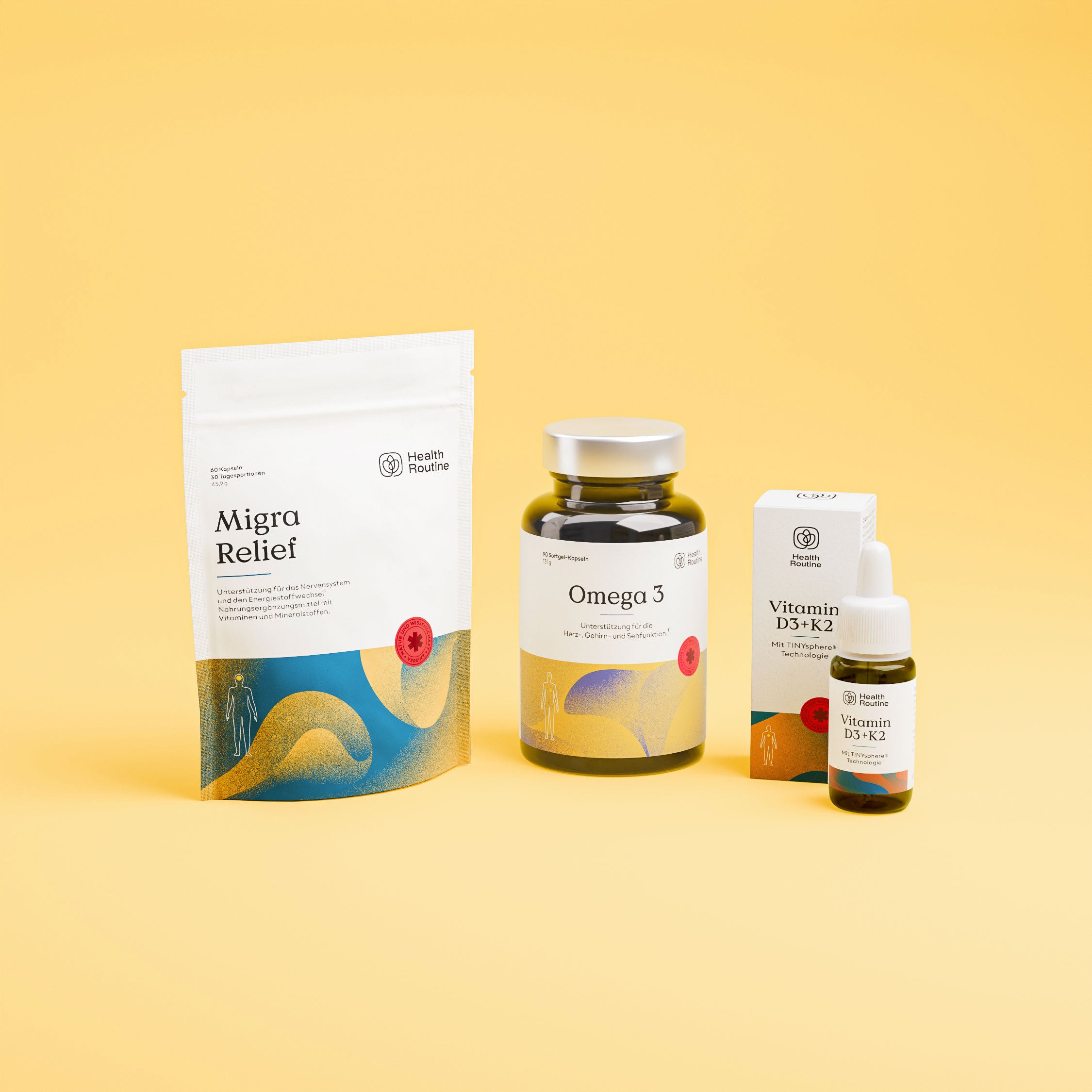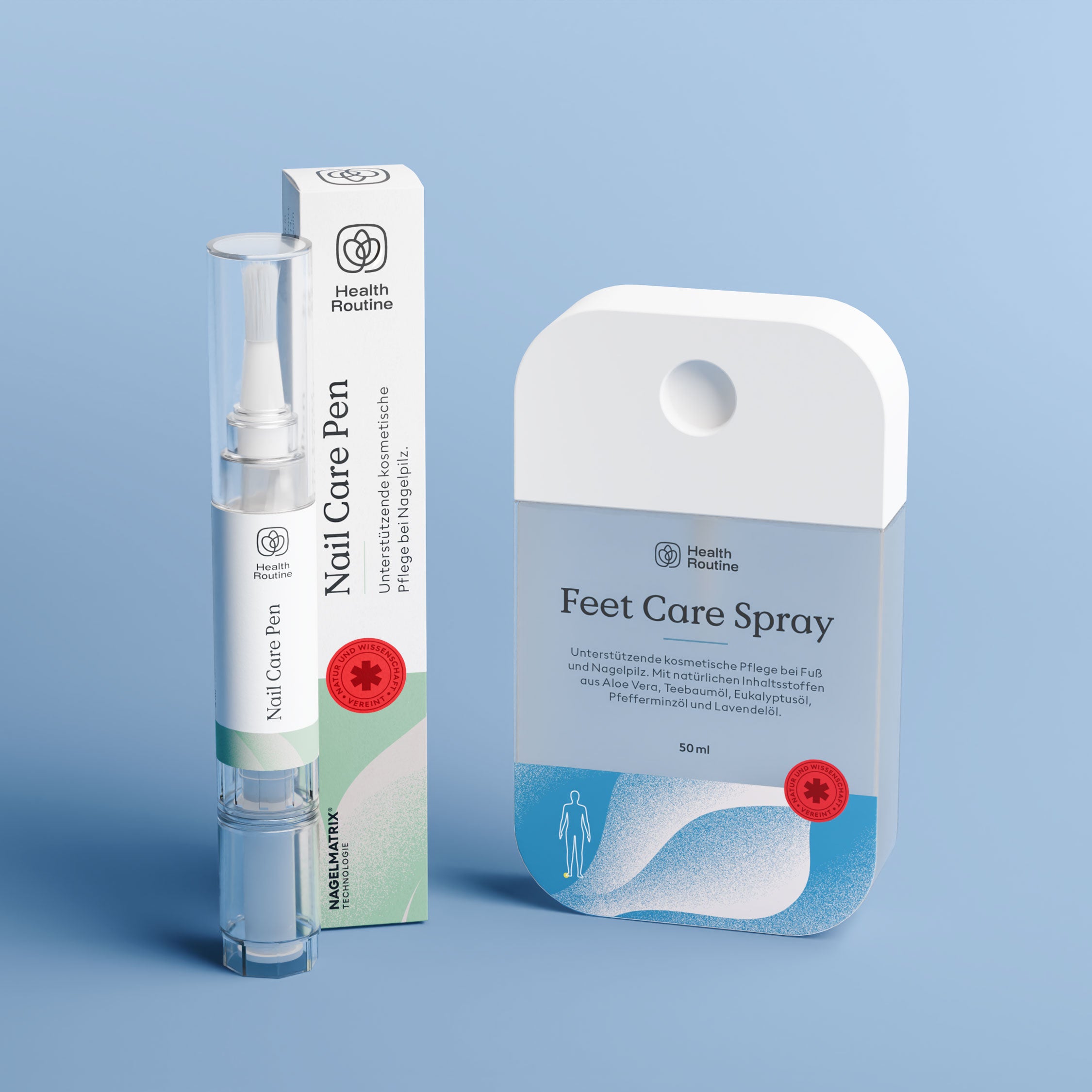The most important things at a glance
- Learn why your joints crack – an investigation into the phenomenon using literary evidence.
- Understanding causes and risks
- Natural measures – everyday exercises, nutritional tips and supplementary products that can support your joints in everyday life.
Why do joints crack?
Cracking joints is a common, mostly harmless , phenomenon. People often ask themselves, "Why do my joints crack?" This can be caused by natural processes in the body or by signs of developing problems.
Studies suggest that in most cases, occasional cracking is neither harmful nor related to disease ( Castellanos J, Axelrod D. "Cracking joints: harmless or harmful?").
In this article, we discuss the different causes of joint cracking and explain in particular how cavitation, the slipping of tendons and ligaments, and nutritional deficiencies can play a role.

Ondersteunt een optimale werking van het bewegingsapparaat
Na 3 maanden optimale werking
365 dagen garantie
Joint cracking due to gas bubbles (cavitation)
The most common cause of joint cracking is cavitation . This occurs when tiny gas bubbles form in the synovial fluid (synovia) and then burst . This fluid contains dissolved gases such as
- Nitrogen,
- oxygen
- and carbon dioxide, which turn into small bubbles under pressure changes.
When the joint capsule moves or cracks, the pressure changes and the gas bubbles burst, causing the typical sound ( Kawchuk GN et al. (2015). "Real-Time Visualization of Joint Cavitation.").
🌿 Expert advice: This phenomenon is generally harmless and does not cause damage to the joints – as long as no pain or inflammation occurs.
Joint cracking caused by tendons and ligaments
In addition to cavitation, joint cracking can also be caused by tendons and ligaments sliding over bone protrusions . These structures connect muscles and bones and provide stability.
During certain movements, they temporarily change their position, which can cause the audible cracking sound . This, too, is usually a normal physiological process that does not cause long-term damage ( Standring S (Ed.) (2020). Gray's Anatomy: The Anatomical Basis of Clinical Practice) .
Risks and possible illnesses
Although joint cracking is harmless in most cases, there are certain warning signs you should look out for. If the cracking is accompanied by pain , swelling , or restricted movement , you should consult a doctor.
Here are some symptoms and possible causes:
|
symptom |
Possible cause |
Recommended action |
|
Cracking after injuries |
Possible damage to joint structures |
Medical examination |
|
Cracking with pain |
Inflammation or joint blockages |
Doctor's visit, physiotherapy |
|
Persistent cracking and stiffness |
Degenerative joint diseases such as osteoarthritis |
Diagnosis and, if necessary, medical support |
Osteoarthritis and similar conditions can be associated with increased symptoms. However, studies show that regular, painless joint cracking is not necessarily associated with an increased risk of osteoarthritis. However, if the cracking is suddenly accompanied by other symptoms, it is advisable to seek medical advice.
🌿 Expert advice : The information provided does not constitute medical advice and is not a substitute for consulting a physician. If you have any health concerns or questions, please consult a healthcare professional.
Cracking joints and deficiency symptoms
In rare cases, joint cracking can be related to nutritional deficiencies . An insufficient intake of
- Calcium,
- Vitamin D,
- magnesium
- or omega-3 fatty acids can affect joint health.
A balanced diet including suitable micronutrients can be a useful supplement.
Remember to strengthen your entire body: strong muscles and healthy bones also contribute to joint stability.

Ondersteunt een optimale werking van het bewegingsapparaat
Na 3 maanden optimale werking
365 dagen garantie
Is joint cracking harmful?
According to most scientific findings, occasional cracking of joints is generally harmless and has no negative long-term effects. A comprehensive 50-year study found no direct link between regular cracking of the fingers and osteoarthritis.
However, you should remain vigilant. If pain or other symptoms occur, the cracking may be an indication of developing problems ( Castellanos J, Axelrod D. (1990). Cracking joints: harmless or harmful?) .
How to keep your joints moving – tips for everyday life and nutrition
To support your joints in the long term , we recommend a combination of
- regular exercise,
- balanced diet
- and well-thought-out additions.
Small routines in everyday life can help to positively influence mobility and well-being.
Movement and stretching exercises
Regular exercise strengthens not only your muscles but also your joints. Incorporate gentle stretching exercises and joint-friendly sports into your daily routine, such as:
- Targeted stretching exercises to improve flexibility
- Low-impact activities such as swimming or cycling
- Strengthening exercises to stabilize the joints
Nutrition and nutrients
Adequate nutrition is essential for joint health . Make sure your diet contains enough calcium, vitamin D, and magnesium. Omega-3 fatty acids can also help support your musculoskeletal system.
|
nutrient |
function |
Recommended sources |
|
Calcium |
Strengthens bones and supports joint function |
Dairy products, green leafy vegetables |
|
Vitamin D |
Promotes calcium absorption |
Sunlight, fatty fish |
|
magnesium |
Supports muscle function and nervous system |
Nuts, whole grain products |
|
Omega-3 fatty acids |
Known for its contribution to a balanced diet |
Fish, flax seeds, chia seeds |
A balanced diet and targeted nutritional supplements can help ensure that joint cracking remains a normal, physiological occurrence and support physical well-being.
Plant-based care for more comfort during exercise
In addition to a health-conscious lifestyle in everyday life, Arthro Complete from Health Routine complements personal well-being with selected ingredients.

Ondersteunt een optimale werking van het bewegingsapparaat
Na 3 maanden optimale werking
365 dagen garantie
The dietary supplement is based on a combination of natural ingredients that have been carefully compiled on the basis of current scientific findings – as a supportive supplement for a balanced diet and an active everyday life.
Arthro Complete contains a carefully balanced blend of vitamins, minerals and herbal extracts that work synergistically to specifically supplement your diet during physical activity.
Conclusion
In summary, occasional joint cracking is, in most cases, a normal occurrence caused by cavitation, or the slipping of tendons and ligaments. As long as there is no pain or other symptoms, there's nothing to worry about. However, if you experience accompanying discomfort such as pain or stiffness, it's advisable to seek medical evaluation.
In addition to preventative measures such as regular exercise and a balanced diet, targeted support from natural dietary supplements such as Arthro Complete can also contribute to long-term support of your daily exercise routine. This product combines the power of nature with modern science to complement an exercise-conscious lifestyle.
FAQ
Why do my joints crack?
The cracking sound is usually caused by the rapid formation and bursting of gas bubbles in the synovial fluid or by tendons sliding over bony protrusions. Both processes are usually harmless as long as no other symptoms occur.
Is joint cracking harmful?
As most studies show, the occasional cracking of joints is generally not harmful. However, if pain, swelling, or restricted movement occur, medical evaluation should be sought.
Which nutrient deficiency can lead to joint cracking?
Although a direct causal relationship has not been clearly proven, deficiencies in calcium, vitamin D, magnesium or omega-3 fatty acids can impair joint health and indirectly contribute to symptoms.
What helps against frequent joint cracking?
In addition to regular exercise and stretching exercises, a balanced diet and the support of natural supplements such as Arthro Complete can help support your musculoskeletal system.






